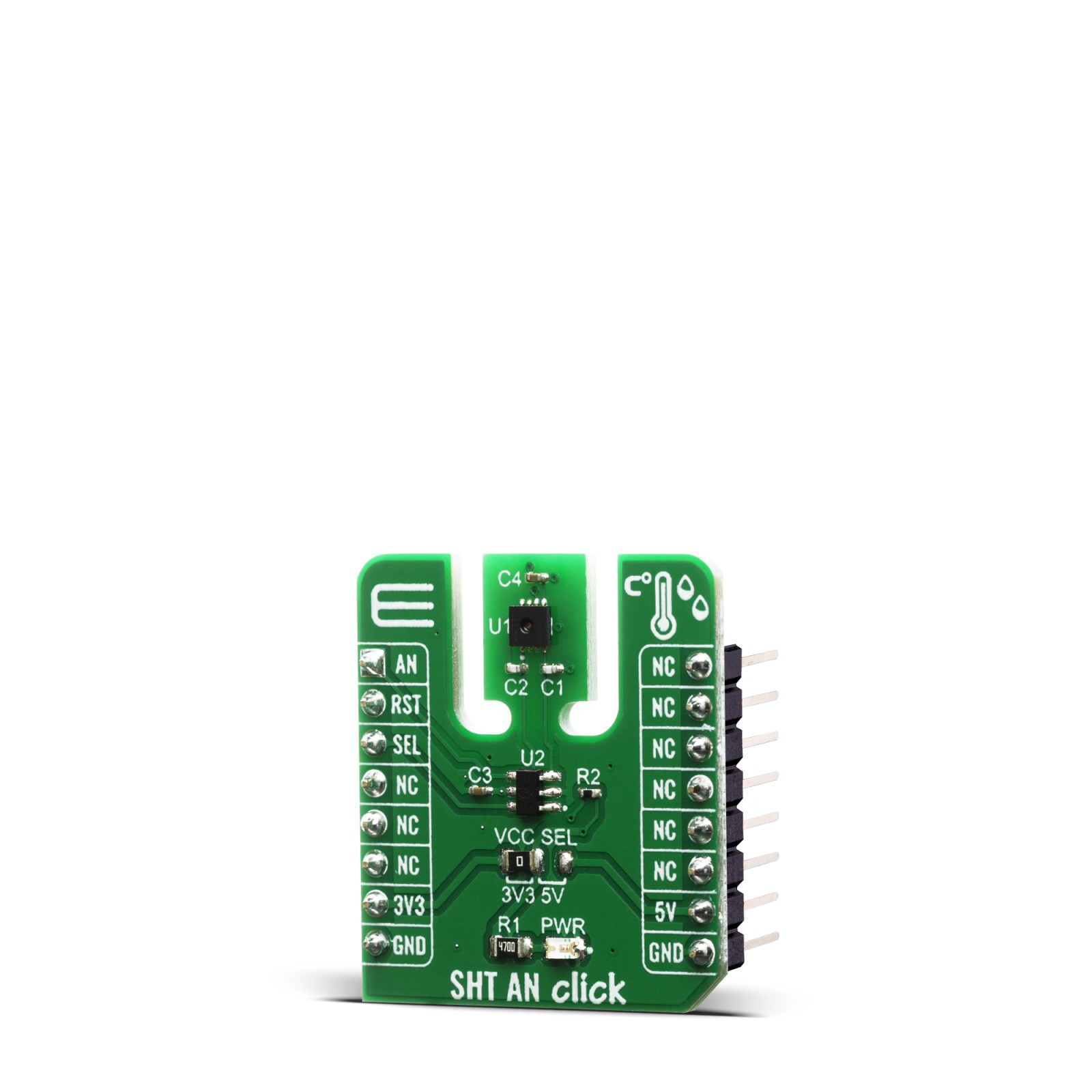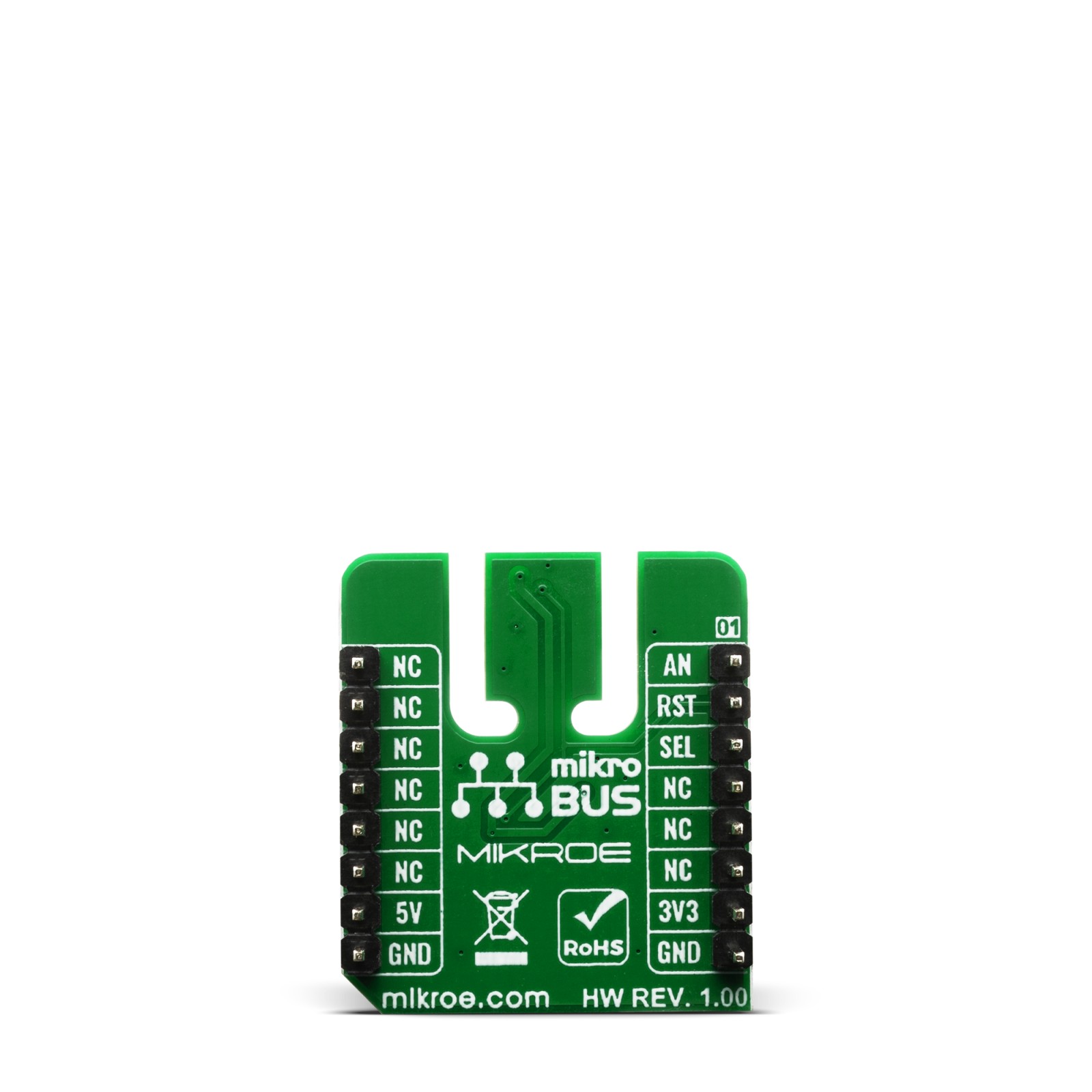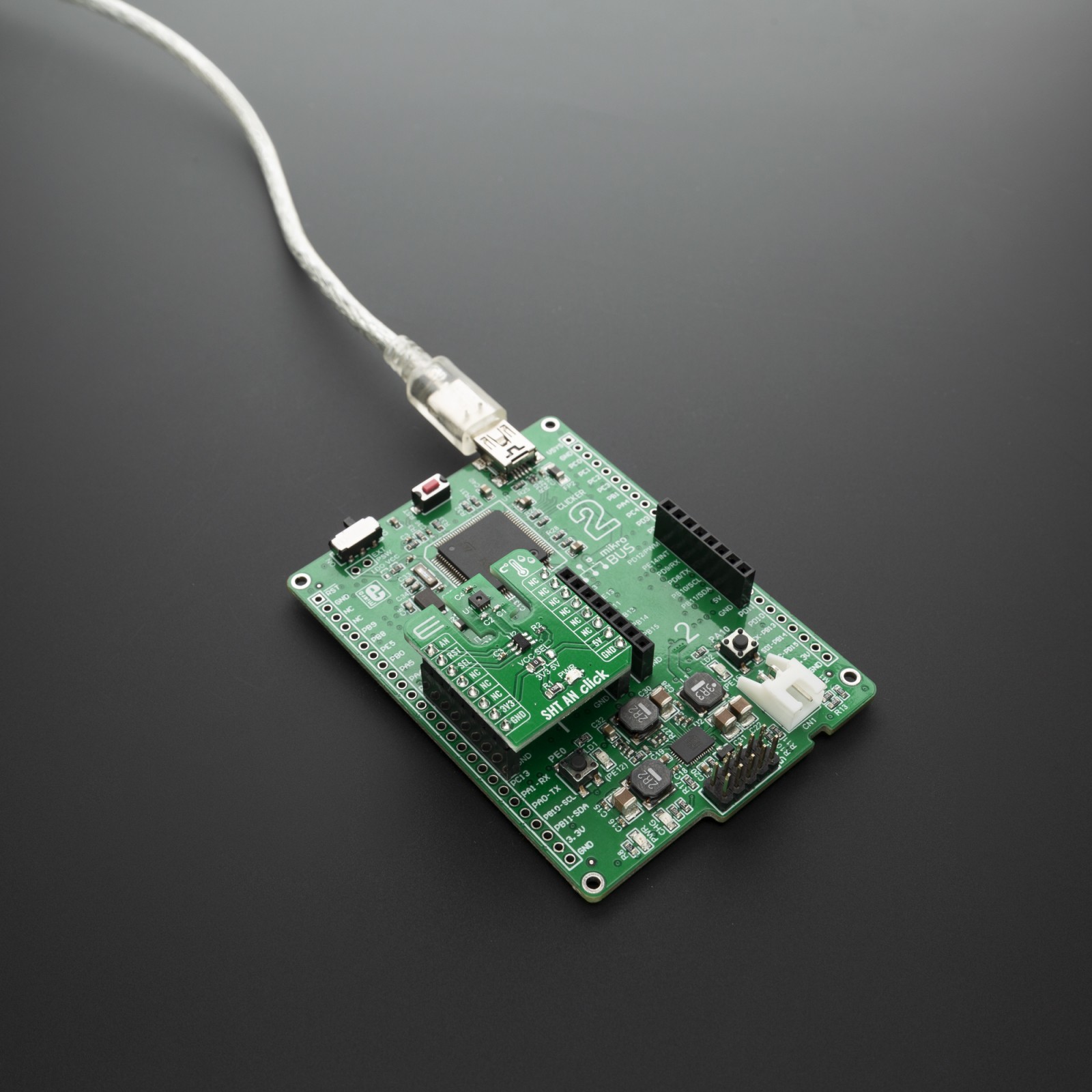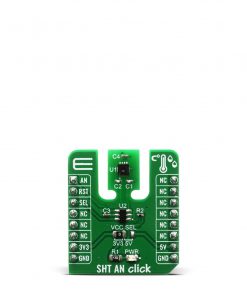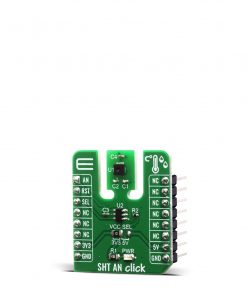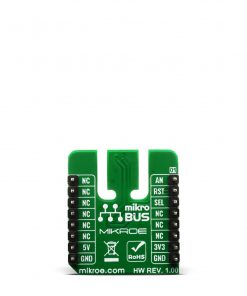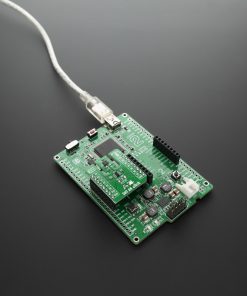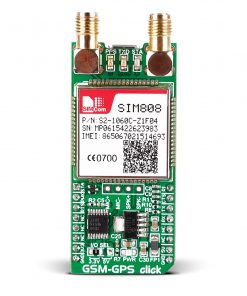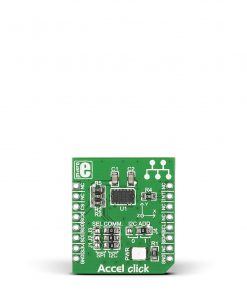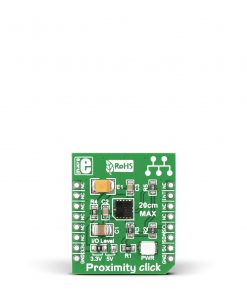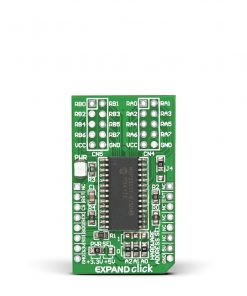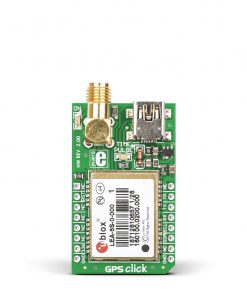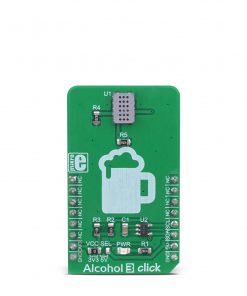SHT AN Click
R350.00 ex. VAT
SHT AN Click is a sensorics based add on board which can be used for measuring humidity and temperature. It features fully calibrated, linearized and temperature compensated SHT31-ARP-B sensor with analog output. This sensor is built on a new technology CMOSens® sensor chip from Sensirion. What differentiate this Click board comparing to other is dual sensor analog output which can be used for measuring and calculation of the data over one analog output. This board is best suitable for the smart and low power applications which require temperature range of -40 to up to 90 °C. We have also in our offer SHT Click, which is a digital interface version of the same sensor.
SHT AN Click is supported by a mikroSDK compliant library, which includes functions that simplify software development. This Click board™ comes as a fully tested product, ready to be used on a system equipped with the mikroBUS™ socket.
Stock: Lead-time applicable.
| 5+ | R332.50 |
| 10+ | R315.00 |
| 15+ | R297.50 |
| 20+ | R286.30 |


